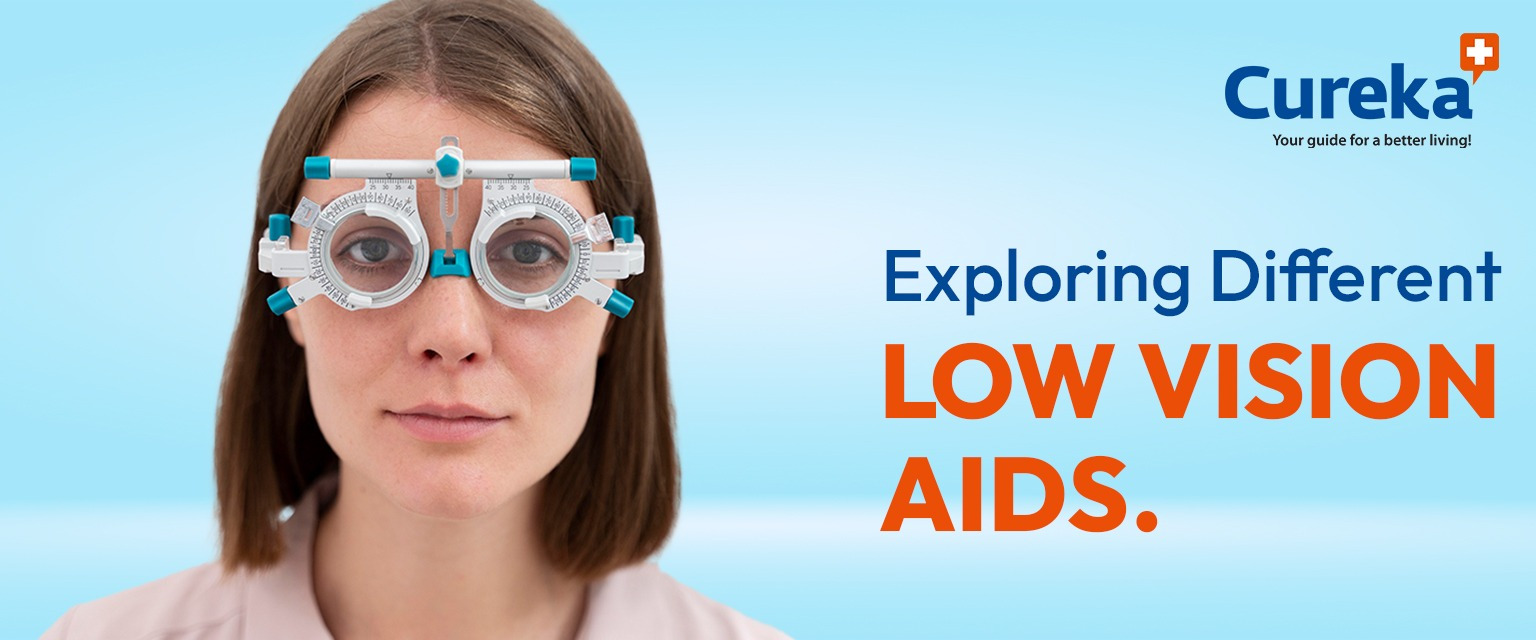Exploring Different Low Vision Aids
Low vision aids (LVA) or low vision assistive products (LVAPs) are devices that aid people with low vision and allow them to use their residual vision for better living. LVAP work by making the objects appear bigger, brighter, and blacker or more closely, with improved contrast. Yes there are a lot of products to support individuals with low vision and give them confidence. With these low vision aid they could even attach needle and thread! In this blog let’s explore different low vision aids.
Low vision aids can help you visually navigate the day-to-day challenges posed by eye conditions like macular degeneration, diabetic retinopathy, glaucoma, and retinitis pigmentosa.
Types of Low vision Aids:
Magnifiers: Low vision aids that use either lenses or cameras to make things look bigger.
Magnifiers come in 2 different forms – hand held magnifier and hands free magnifier.
Hand held magnifiers are held by the person using it moving the magnifier above the text. Hands free magnifiers are with stand or spectacles that leaves the user handsfree.
Types of magnifiers:
Fresnel magnifier:
Plastic like sheet magnifier for reading purpose. Can comeupto A4 size covering whole page of the book.
Bar magnifier:
They enlarge and magnify a single line or segment. Helps in reading without distortion.
Dome magnifier:
It is made of optical-class PMMA resin. The bottom is concave. To use, put and move it on the paper directly. Comes with LED light feature also.
Hand magnifier:
The most common form of magnifier that exists more than ages. Comes with two lens main and secondary. Main lens is for reading and secondary lens is to view fine particles. Nowadays hand magnifiers also have an inbuilt led light.
Portable video magnifier:
Handheld digital magnifier is for people with visual difficulty. The magnifier is battery operated and also can be connected to any Screen like TV/ desktop for larger view. The text to be magnified should be captured by the video magnifier.
Neck magnifier:
Can be worn on neck or chest and used as handsfree magnifier. Using the rope the user can adjust the distance between eyes, lens and observed object .
Pen holder magnifier:
Magnifier speciallly designed for writing purpose. Magnifier can be mounted to any pen and used for writing.
Mouse magnifier:
USB magnifier that is small, convenient like computer mouse.Should move the mouse over the text to view and it will be shown up on the computer screen. The image can be freezed or defreezed.
Adjustable stand magnifier:
These are stand magnifiers made of aspheric lenses. It should be placed above the object or closer to the object to be viewed without the need to move the magnifier.
Illuminated stand magnifier:
Stand magnifier with torch light for clear vision.
Reading stand:
Creates a comfortable angle for reading, writing or drawing for individuals with low vision as they bring writing and reading materials closer to the eye.
Reading guide
Lightweight plastic strip that allows to highlight printed text through a transparent tinted window.
Writing guide
Writing guides are low vision aids that are designed to improve the penmanship of those who are visually impaired.
Made up of dark plastic and has a cutout space to give a clear picture of the space to write.
Large print keyboard sticker
Large print key top stickers in black and yellow background to enhance the visibility for low vision individuals who want to do typing.
These are specially designed for people with low vision. They are smaller and lighter than ordinary telescopic systems. Monoculars are for use with one eye whereas binoculars are for use with both eyes. They can be useful for tasks and activities like reading bus numbers and notice boards or visiting the theatre. Binoculars can only be used for distance tasks, but most monoculars can be used for distance and near vision activities (from about 15cm).
Few examples are:
Handheld monocular telescope:
Type of monocular telescope that is used to observe distance and close objects precisely. Equipped with the rope the telescope can also be hung around the neck and used whenever necessary.
Spectacle mounted monocular telescope:
Monocular telescope that can be mounted on spectacles or power glasses to observe distance and close objects clearly.
Hobby horse binocular magnifier:
Binocular fixed on spectacles. Can be used for reading and other minute works.
Binocular to see TV or distance objects:
Hands free head mounted glasses with binocular to see TV, site seeing etc
Magnifiers in a spectacle frame
Magnifiers in spectacle frames are not the same as ordinary spectacles. They simply magnify objects rather than correcting short or long-sightedness. These devices are much thicker than ordinary spectacles and are designed for near vision only. The advantage is you have two hands free and do not have to hold the magnifier, the disadvantage is the working distance is much shorter than a hand or stand magnifier of the same power. You will need to bring the object very close to your eyes for the magnifier to be in focus. Aspheric spectacles and prismatic spectacles are examples of such magnifiers.
Conclusion
The success of these devices is well-documented. Based on the need of the person one can always choose the best magnifier and have a clear vision comfortably.
You can explore a range of low vision aids at cureka.com











